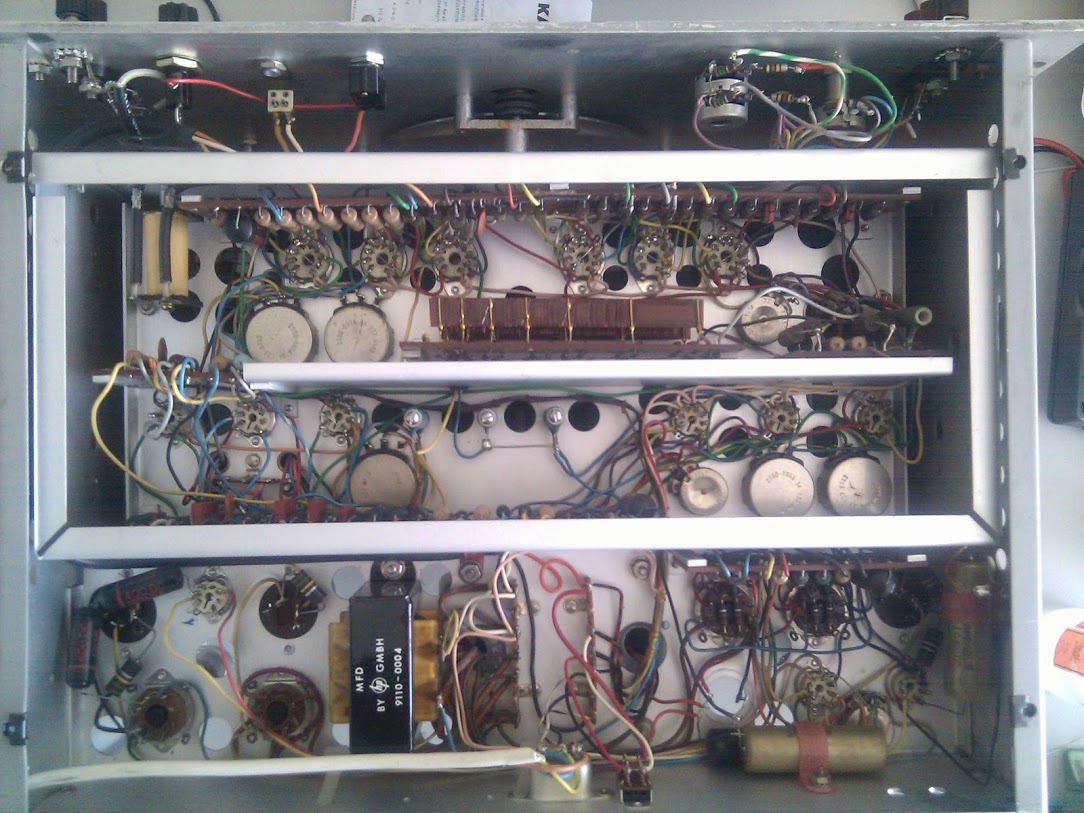It is a HP 202A Low Frequency Function Generator, which was introduced in 1952, the model here is the slightly revamped one from 1959 onwards (I cannot find an exact production date on it, so I guesstimate it in the early 1960s). It can generate sine, triangular and square waves from 0.01Hz up to ~1200Hz and is still working properly after ~50 years. I guess the unit has been maintained and serviced over the years, so the tubes must be all quite newer than the unit itself.
The sine wave is "synthesized" from the triangular wave using a network of silicon diodes and resistors with about 1%rms distortion, more about that in the manual: http://www.hparchive.com/Manuals/HP-202A-Manual-SNprefix-037.pdf
A company where I interned as a student phased them out and they landed in a dumpster where I rescued one and another complete set of tubes from another one. It is missing it's top cover and enclosure, I guess it was sitting inside a 19" rack for most of its active time. Since then it has been sitting in my parents basements for another 20 years
https://plus.google.com/u/0/+VladimirPantelic/posts/BrArMh9wmeG

.jpg)
.jpg)




















.jpg)



.jpg)



.jpg)









.jpg)
.jpg)
.jpg)
.jpg)
.jpg)
.jpg)
.jpg)
.jpg)
.jpg)
.jpg)

